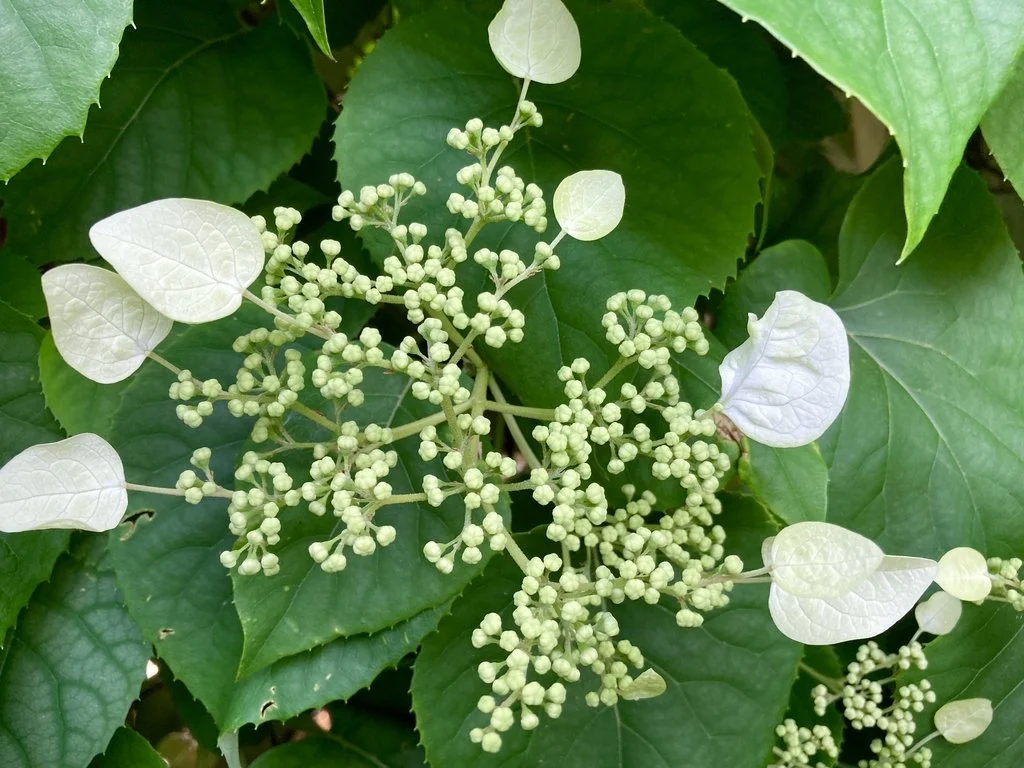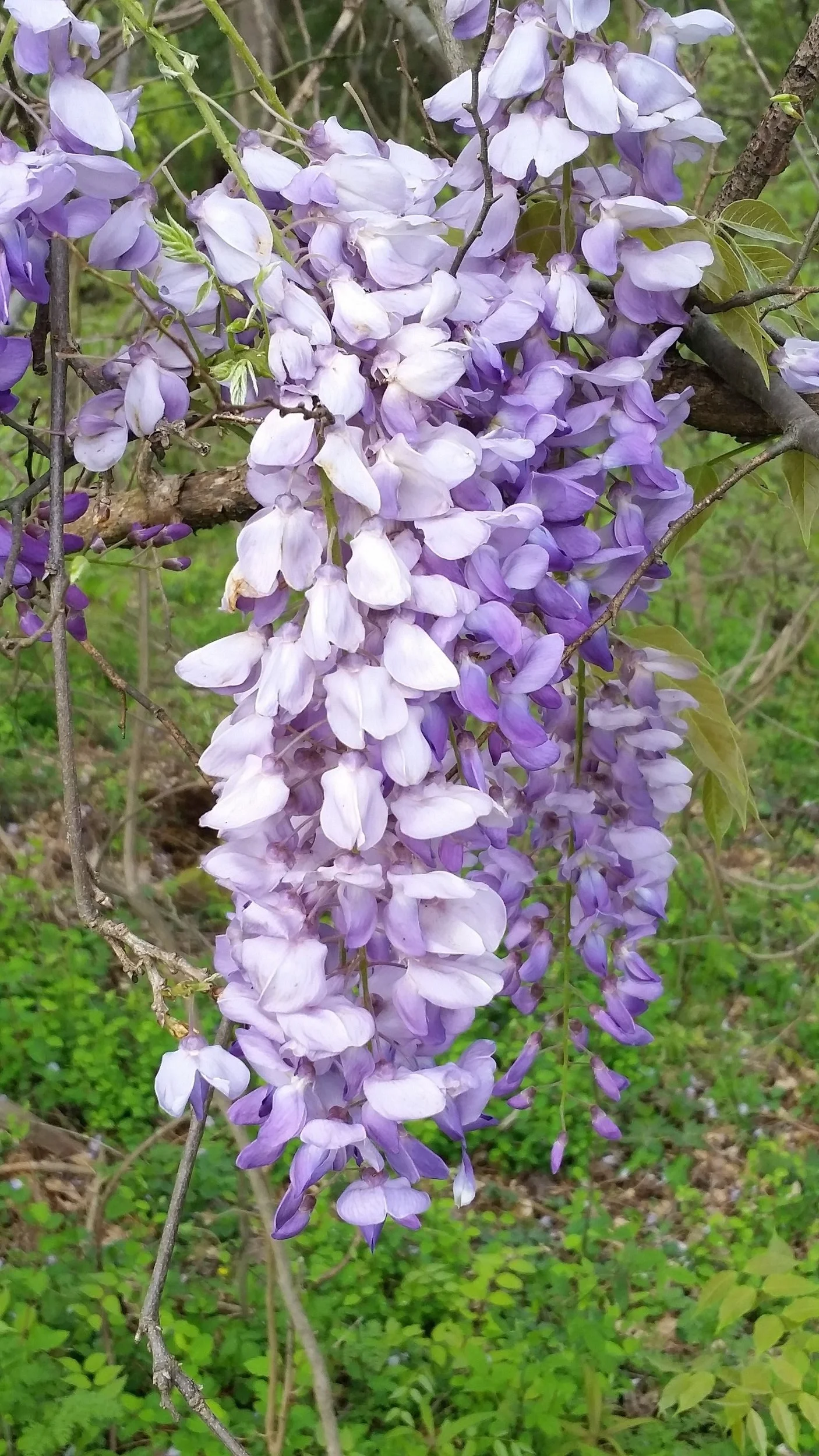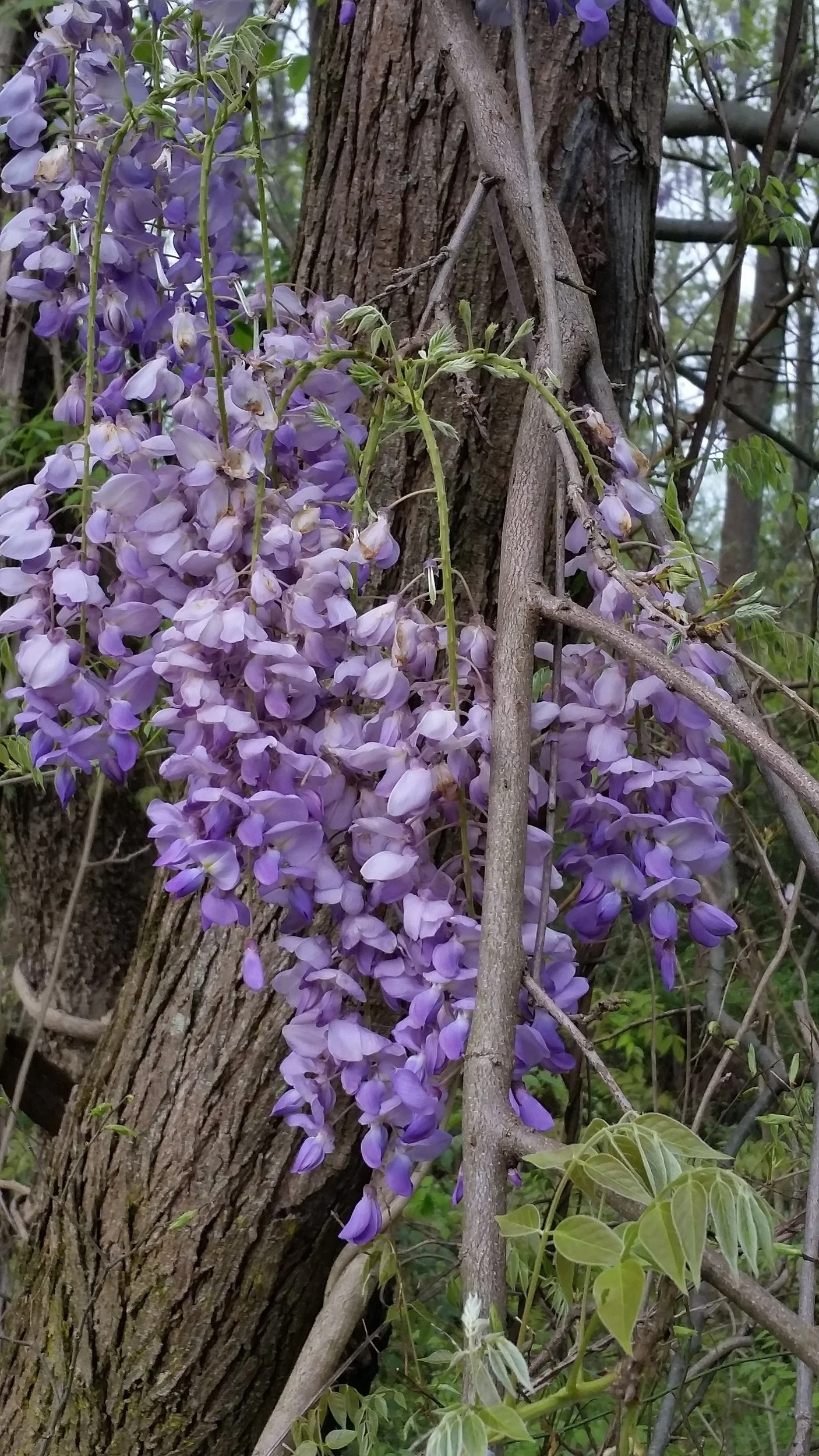As a result of Hurricane Helene, I have several trees that are missing their tops – bare, limbless trunks a foot or more across, reaching ten feet or more into the air. Because our property is home to a large number of pileated woodpeckers, we do not remove “snags” unless they actively endanger buildings or prized plants. The woodpeckers were distressed by the storm-caused loss of their homes but have quickly adapted. They hammer away to create new cavities. Wood chips piled around tree bases make it easy to detect their new homes. I wanted to plant vines to soften the current stark appearance of the trunks. I considered trumpet vine, cross vine, Confederate jasmine, honeysuckle, clematis, and settled on Climbing Hydrangea, Hydrangea anomala (pronounced hy-DRAN-jee-ah ah-NOM-uh-luh), formerly known as Hydrangea anomala ssp. petiolaris.
Climbing Hydrangea will grow in part sun to full shade, in almost any type of soil. It climbs by twining and also sprouts little sucker feet to adhere to its host. It has white lacecap flowers in summer, attractive green foliage in summer, yellow fall color, and exfoliating bark in winter, meaning it is attractive year-round. Plants are hardy in zones 4-8. They do not get heavy and do not strangle trees. Mature vines are drought resistant.
While Climbing Hydrangea can reach heights up to 80 feet, it is easily restrained to a manageable size. It can also be allowed to grow standalone as a shrub, but may appear unkempt. The vine is slow to establish a good root system and stems grow slowly the first few years. It may take three years or more to produce begin producing blooms. Unlike some hydrangeas, Climbing Hydrangea flowers do not change color according to the soil’s acid level. All flowers are ivory, up to eight inches across, with the centers being small and fertile and the surrounding perimeter being showy and non-fertile.
Climbing Hydrangea can be confused with another vine with similar flower structure, False Hydrangea Vine (Schizophragma hydrangeoides). False Hydrangea flowers may have tints of pink, rose, blue, or purple, and the flower structure is a bit different, with the infertile flowers being larger, and triangular or heart-shaped. Flowers of Climbing Hydrangeas have four petals, while False Hydrangea has a single, heart-shaped sepal.
Both vines are deer and rabbit resistant, but foliage may be damaged by Japanese beetles.
This tiny Climbing Hydrangea will soon adhere and eventually cover the adjacent dead tree trunk with beautiful leaves. It will be a few years before flowers appear.
This hydrangea-covered tree trunk offers wonderful contrast to its bare-barked neighbors.








